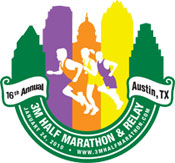The Boston marathon. Sometimes I still catch myself saying it aloud when I am stretching before a training run. Boston is the oldest modern marathon behind the Olympic Marathon, and since 1897, the annual April event has hosted the finest distance runners in the world.
The enthusiastic spectators, the roller-coaster ride of Heartbreak Hill and the signature victory laurel are the stuff of legend. But perhaps what sets the Boston Marathon apart is that you have to work so hard to meet the qualification requirements.

Boston Qualification Standards
Just posting a “Boston Time” or a BQ is quite an accomplishment – and for many runners it is akin to the Holy Grail. Once in the field however the fun has just started as the famed course from Hopkinton, MA to Boston is very treacherous. A point to point Marathon is very different than many courses that have an out and back format. At the Philadelphia Marathon for example in 2006 the final 12 miles of the race consisted of a 6 mile run out from the Art Museum a turn and a 6 mile retracing of steps back to the finish line. This allows for the runner to know exactly the terrain they will have to cover over the final portions of the race. Any downhill sections on the way out are uphill portions on the way back and vice-versa.
At Boston however no single stride will be retraced – making for a unique experience and because of the elevation changes – an event unlike any other. The storied Newton Hills which begin at Mile 16 and culminate at “Heartbreak Hill” at mile 21 get most of the publicity. But in reading about the course and talking with Boston veterans it is actually the severe downhill nature of the course from Hopkinton to Newton and then again from Heartbreak to the finish at Copley Square that shred your quadriceps muscles and makes the race so challenging.

Newton Hills
It takes a lot out of a runner’s legs to “brake” on a decline – and those quads that become overtaxed in the early portions of the run are simply not there during the latter stages of the race. For a unique course such as Boston – unique training is required. And quite frankly, with another 26.2 miles ahead in Pittsburgh 13 days after Boston – this marathoner has to prepare like never before.
To focus on building quadriceps strength running hills both up and down are part of any solid Boston Marathon Training program. Luckily training here in Austin, TX provides me with a lot of great opportunities to do exactly that – especially “racing” the downs a few times of week focusing on lengthening my stride to compensate for the decline and not “braking” with my legs. Adding three cycling sessions per week has also allowed me to concentrate on those quads and help prepare for the challenges of that Boston will present.

2010 3M Half-Marathon
A unique training opportunity presented itself to me this week as the 3M Half-Marathon is scheduled for Sunday, January 24, 2010 here in Austin, TX. Falling on a day where I had a 12-mile training run on the calendar – I registered today for the race. The unique thing about the 3M course is that it is decidedly downhill. As I have mentioned many times previously, the best type of training is to not only focus on varying your workouts – but also trying as best you can to simulate race conditions.

3M Half Marathon Elevation Chart
This half-marathon capped at 5,000 runners allows me to accomplish quite a few goals in a single Sunday:
- Simulate the race experience – I have not “run in a crowd” since last May – racing will help me work on sticking to a predetermined pace and not allowing the excitement of race day get me off of my race-plan. An issue I know will be a big challenge for me with 25,000 runners and close to a million spectators at Boston in April.
- Race the “downs” – which is something I have never had the opportunity to do. Aside from training runs I have never run a course featuring down-hill grades lasting more than a few hundred yards. The 3M will allow me to really practice my stride and help further strengthen my quadriceps muscles.
- Take inventory of our training to date – am I doing enough mileage coming back from my shin issue? Do I need to back off a bit on pace? Can I run with even effort even though my mile splits may vary due to terrain changes?
- Practice my pre-race, racing and post race nutrition plans.
- Practice my hydration plan for water consumption and gels.
- Have some fun! Marathon training can be very lonely and difficult – this is a great opportunity to spend some time with other runners and do what we love to do.
Lastly – check off an achievement that was not on my goals for 2010 before the first month of the New Year wraps up. I have always wanted to run a half-marathon – it is a distance that has intrigued me for some time. Next Sunday I will get the chance and come home with a cool race medal and shirt. How great is that?
So next Sunday we race! Please be sure to stop by for pictures from the event and a race report.




